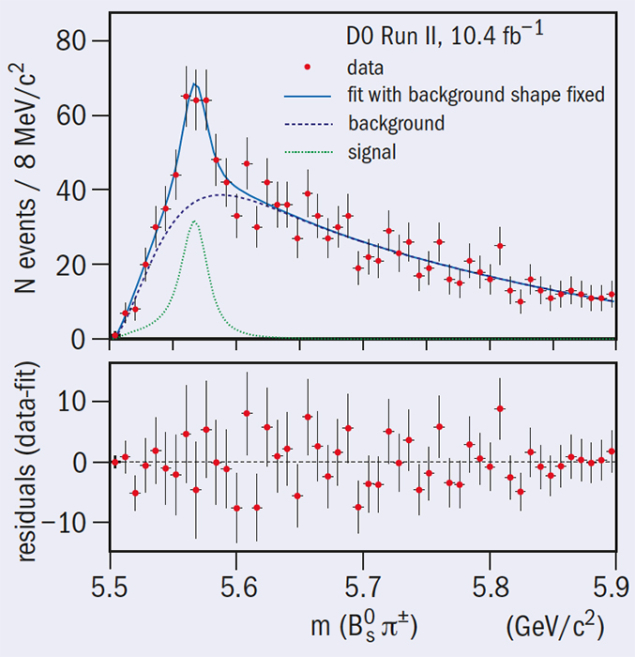
Image credit: DZero Collaboration.
Scientists from the DZero collaboration at the US Department of Energy’s Fermilab have discovered a new particle – the latest member to be added to the exotic species of particles known as tetraquarks.
In 2003, scientists from the Belle experiment in Japan reported the first evidence of quarks hanging out as a foursome, forming a tetraquark. Since then, physicists have glimpsed a handful of different tetraquark candidates, including now the recent discovery by DZero – the first observed to contain four different quark flavours.
DZero scientists first saw hints of the new particle, called X(5568), in July 2015. After performing multiple cross-checks, the collaboration confirmed that the signal could not be explained by backgrounds or known processes, but was evidence of a new particle.
And the X(5568) is not just any new tetraquark. While all other observed tetraquarks contain at least two of the same flavour, X(5568) has four different flavours: up, down, strange and bottom.
Four-quark states are rare, and although there is nothing in nature that forbids the formation of a tetraquark, scientists do not understand them nearly as well as they do two- and three-quark states. This latest discovery comes on the heels of the first observation of a pentaquark – a five-quark particle – announced last year by the LHCb experiment at the LHC.
The next step will be for DZero scientists to understand how the four quarks are put together. Indeed, the quarks could be scrunched together in a tight ball, or they might be a pair of tightly bound quarks revolving at some distance from the other pair. Scientists will sharpen the picture of the quark quartet by making measurements of properties such as the way that X(5568) decays or how much it spins on its axis. As with previous investigations of the tetraquarks, studies of the X(5568) will provide another window into the workings of the strong force that holds these particles together.
Seventy-five institutions from 18 countries collaborated on this result from DZero.








